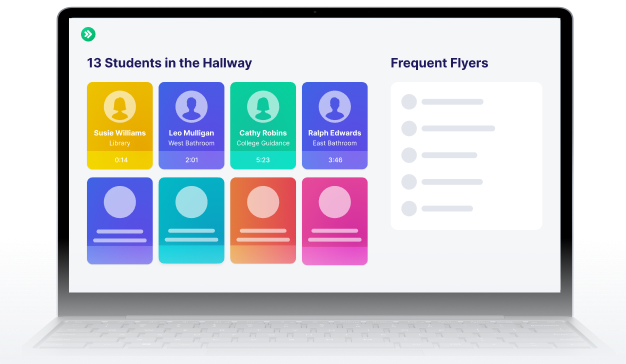In the News: Enhancing Safety in Schools Across Minnesota
Read the Story
SmartPass Co-Founders Listed on Forbes 30 Under 30
Read the Story

Britt White, VP of Sales
.avif)

In recent years, the push to sharpen teacher evaluations, particularly through reforms tying evaluations to test scores, has not significantly improved student learning. This confirms what many educators and school leaders already thought: truly improving schools is more involved than many policymakers realized. It's a tough reality for campus principals and their teachers, who are dedicated to student success. So, how can school principals use best practices for teacher evaluation effectively to help their teachers grow and better impact student achievement?
Constructive teacher evaluations are key in helping teachers excel and develop. By focusing on support and growth, the evaluation cycle can go beyond simple ratings, becoming a force for positive change and better learning outcomes. This article sheds light on the value of constructive evaluations and provides school principals with practical advice and tips to help their teachers thrive.
At the heart of any effective teacher evaluation is a solid set of criteria. The National Council on Teacher Quality (NCTQ) points out that teacher evaluation criteria should look at many different parts of teaching and how they affect student learning. Here's a rundown of what should be included in every teacher evaluation:
Incorporating one additional step adds value to these recommendations made by the NCTQ and other education experts. It ensures that the teacher evaluation process doesn't just end with feedback but leads to actionable steps for professional growth.
Setting up a teacher evaluation system that's fair and doesn't favor anyone can be tricky for school principals. This means having a clear, standard system that every teacher goes through is important. Also, all evaluators need to be trained so they understand their own hidden biases and can avoid them. A good evaluation system is one where everything is out in the open—teachers know exactly what's expected of them and how they'll be judged.
This teacher evaluation criteria makes sure that your evaluations cover all the important parts of teaching, looking at what's happening now and finding ways to make teaching even better.
To add value and depth to your evaluations, integrating diverse strategies can offer a comprehensive perspective on a teacher's performance. Besides the required formal observation, these best practices for teacher evaluations can facilitate ongoing improvement and provide a deeper insight into instructional methods.
These best practices for teacher evaluations help principals become familiar with the teachers, their teaching methods, and the students, making the formal evaluation process less anxiety-inducing for everyone. Regular visits and varied activities allow for early identification of strengths and areas for improvement, providing teachers with opportunities to adjust their methods before the formal evaluation takes place. This approach fosters a culture of trust and continuous improvement within the school.
The main event during the teacher evaluation cycle is the formal observation, which typically involves a 45-minute session where principals observe a complete lesson. The formal observation is a significant opportunity to gain insights into a teacher's instructional methods, classroom management, and interaction with students.
When it comes to delivering an effective formal teacher evaluation, the focus should be on making the process meaningful and low-stress for both teachers and principals. A versatile rubric can simplify this process by offering a clear and concise tool for assessing teaching practices, which not only saves time but also reduces the administrative burden associated with evaluations. Incorporating a versatile rubric into the evaluation process can be a game-changer for school administrators. It serves as a clear and straightforward method for assessing teaching practices, effectively streamlining the evaluation process. By using a rubric, administrators can save valuable time and significantly cut down on the paperwork and complexity often associated with teacher evaluations. This addition to the set of tools administrators use can make a big difference in managing the workload more efficiently.
Writing down exact dialogues between teachers and students during lesson observations can provide specific feedback on communication styles, questioning techniques, and classroom management. Discussing these precise instances can help explore alternative teaching methods and improve classroom interactions.
Likewise, counting occurrences of certain teaching behaviors, such as positive feedback or constructive guidance, can offer tangible data to complement observational insights. This approach can help highlight effective teaching practices that foster a positive and productive learning environment.
Additionally, it's important for principals to observe everything in the classroom, not just the teacher. Paying attention to the classroom environment, student engagement, and the types of questions students are asking can provide valuable insights into the overall effectiveness of the teaching and learning process.
Incorporating these varied assessment methods can enrich the teacher evaluation process, making it a tool for meaningful professional development rather than just an assessment.
After a teacher's evaluation, the feedback given should be uplifting and focus on what they're good at, where they can get even better, and not just what they're lacking. Principals should aim to give advice that's clear, doable, and looks at the bright side. For instance, instead of just talking about what didn't work, it's more helpful to suggest new ways of doing things and offer support for learning more skills. It's also crucial to have follow-up chats that really help teachers think about how they can use this feedback in their future classes. The main point of doing evaluations is to guide, motivate and help teachers become even better, which in turn helps students learn more effectively.
It's important to recognize that the way principals respond to different teachers based on their effectiveness can vary while still maintaining fairness. Every teacher, regardless of their current skill level or experience, has room for growth. However, the type of development activities tailored for them might differ.
For teachers who are newer or might be struggling, more structured guidance and support are essential. These teachers could benefit greatly from mentorship programs, targeted professional development workshops, and more frequent check-ins to help them build their skills and confidence.
On the other hand, teachers who are seasoned and already performing at a high level might thrive with more autonomy. For these highly effective teachers, opportunities to explore innovative teaching methods or research projects that can further enhance their expertise and contribute to the school's learning environment could be more beneficial.
This nuanced approach ensures that the evaluation process is not just about assessing performance but also about fostering an environment where every teacher feels supported in their professional journey. By recognizing the diverse needs and strengths of their teaching staff, principals can create personalized development plans that encourage continuous growth for all.
Effective evaluations go beyond identifying areas for improvement; they involve recognizing and building on strengths, setting achievable goals, and providing the support and resources teachers need to meet those goals.
In the spirit of supporting educators and simplifying their responsibilities, tools like SmartPass can play a subtle yet impactful role. By streamlining administrative tasks and classroom management logistics, SmartPass allows teachers to devote more of their energy and time to what truly matters—teaching and engaging with their students.
Principals play a crucial role in this process. By adopting a constructive approach to evaluations, they can shift the focus from compliance and criticism to empowerment and professional development. This approach benefits not only individual teachers but also the entire school community, creating a positive culture that values continuous learning and improvement.


.jpg)
